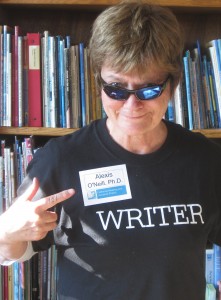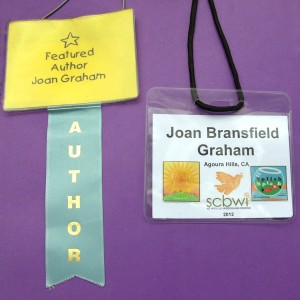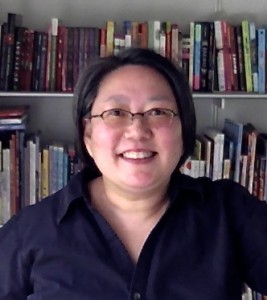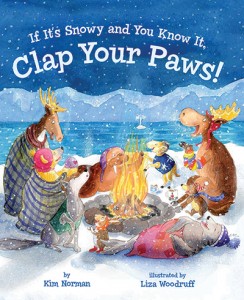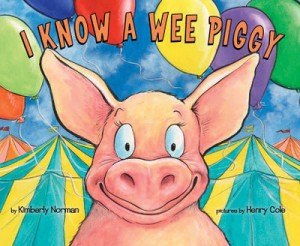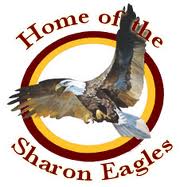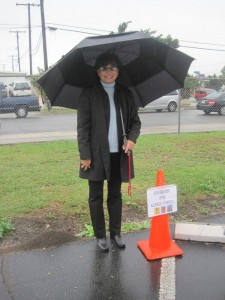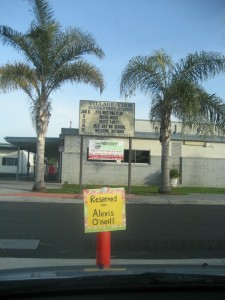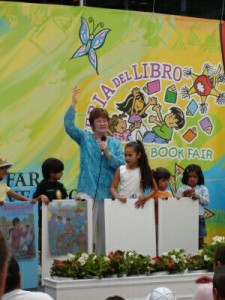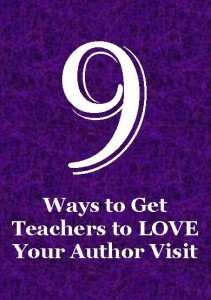 What qualities do teachers look for in a visiting author? I decided to go to the source! I asked public school teacher and children’s author, Rebecca Langston-George, for advice. Rebecca is a past president of the Kern County Reading Association, host of the Young Authors’ Fair, which is, in my opinion, one of the best-run author fairs in the country. She has seen many authors and illustrators through the years and thus is in a perfect position to offer insights into what works and what doesn’t. Enjoy this guest post! — Alexis
What qualities do teachers look for in a visiting author? I decided to go to the source! I asked public school teacher and children’s author, Rebecca Langston-George, for advice. Rebecca is a past president of the Kern County Reading Association, host of the Young Authors’ Fair, which is, in my opinion, one of the best-run author fairs in the country. She has seen many authors and illustrators through the years and thus is in a perfect position to offer insights into what works and what doesn’t. Enjoy this guest post! — Alexis
For the past fourteen years I’ve been involved in Kern Reading Association, including the annual Young Authors’ Fair. YAF, as we call it, brings several children’s authors into local Kern County schools in California each year. I’ve met many fabulous children’s authors and have had the opportunity to view many school assemblies. Here are nine elements that I look for in an author presentation:
Enthusiasm: Wholehearted enthusiasm is important – and contagious; if the author is excited the audience will be excited. The author should be positive and show that he or she is happy to be there, and likes being around kids and teachers.
Relevant Presentation. Have your content tie into the writing curriculum. This helps justify to the principal the expense of bringing in an author and teaches kids writing is a process. It can be as simple as talking about your writing process. How do you go from an outline or some notes to a first draft? How do you get other writers to give you feedback? How do you edit based on that feedback? How does your final product differ from the early draft? Teachers like for students to see that it takes time, practice and revision to write.
Great Visuals: if you show up with a slide show featuring pictures of you 20 years ago and based on books that are now out of print, it looks like you couldn’t be bothered to update your presentation. If you do a PowerPoint or other media presentation, your visuals should be large enough to be clearly seen in the back of the room. I hate when an author shows something on screen that no one can read and then comments “I know this is kind of small, but let’s see if we can all sing along . . .” This shows that you know you have a problem with your presentation and you are too lazy to fix it. Imagine if teachers taught that way–showing math problems on the board that the kids couldn’t read. No teacher can get away with that. Why should an author think he or she can?
Controlled Q & A Segments: I’m okay with an author not having kids ask questions during an assembly, but doing a Q & A takes some skill. This is the segment where I often see the audience falter and the author looking frazzled. It’s often hard for the author to hear the kids’ questions, and their questions are often repetitive or off-track or comments more than questions. Veteran authors will often ask teachers to get questions ahead of time, and then the author chooses which to answer. I’ve also seen authors who have some common FAQ that they just answer themselves: “I’ll bet you’re wondering where I get my ideas. Raise your hand if you ever wondered where an author gets her ideas.” And then he or she answers.
Good Crowd Control: Being able to effectively and positively control an audience is big. I love to see authors who teach kids a signal or use positive reinforcement. Authors who make comments like, “teachers please control your students,” don’t get invitations to return. I’ve actually seen authors snap their fingers at teachers and point to children they want quieted. Not only is this very rude, but some children have issues that the author doesn’t know about.
Fairness. I want to see the author interact with the entire audience. I regularly see authors who favor only one side of the room or only the front of the room, directing eye contact there, picking students there and never interacting with the other part of the audience. That brings up a lot of “That’s not fair” responses from kids.
Audience Participation. Too many people rely on lecture alone and fail to make kids part of the activity. But the participation needs to be appropriate. Nothing will get you on the “never gets invited back” list quicker than whipping kids into a frenzy. I’ve seen authors encourage one half of the room to yell something and then challenge the other side to yell it louder until everyone is out of control. Then the author wonders why the teachers can’t control the audience when the author wants it quiet for his or her presentation.
Positive Off-Stage Presence. Have a great attitude even when you’re not on stage. Everyone appreciates an author who can put on a great presentation, but sometimes the author’s attitude off stage determines whether or not the author gets invited back. The author who gave the best presentation I’ve ever seen and sold the most books at my school ever and was beloved by all the students will never be asked to return. He was surly and rude to all the staff, even going as far as refusing to speak to the coordinator during his visit. He made unkind comments about the quality of the luncheon we arranged and acted annoyed when asked to sign his books.
Ability to Roll with the Unexpected. An author’s flexibility and graciousness are greatly appreciated. Teachers regularly have kids puke in class, have lockdowns, endure power outages, have technology issues, have surprise fire drills when someone pulls the handle for fun. Something unexpected may happen during your visit. It may be something your school host has no control over. If you can smile, be flexible and try to make the most of it you will be admired and respected.
 Rebecca Langston-George is a middle school language arts teacher, SCBWI Central-Coastal California volunteer, and children’s writer. She has two non-fiction children’s books forthcoming with Capstone Press: Fabulous Flappers: Dolled Up Styles of the 1920’s and 30’s will be out in January 2014 and English Rules! The Savvy Girl’s Guide to Language, Writing and More is scheduled for publication in September 2014.
Rebecca Langston-George is a middle school language arts teacher, SCBWI Central-Coastal California volunteer, and children’s writer. She has two non-fiction children’s books forthcoming with Capstone Press: Fabulous Flappers: Dolled Up Styles of the 1920’s and 30’s will be out in January 2014 and English Rules! The Savvy Girl’s Guide to Language, Writing and More is scheduled for publication in September 2014.
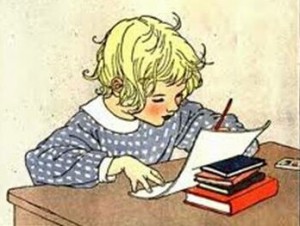 Last week, a high school student got in touch via email. Her teacher is requiring that students do a “Personal Project” that is meaningful to them. This particular student is interested in becoming an author illustrator. (Awww! How cool! She chose me to give insights and advice!) And she wanted me to answer seven questions.
Last week, a high school student got in touch via email. Her teacher is requiring that students do a “Personal Project” that is meaningful to them. This particular student is interested in becoming an author illustrator. (Awww! How cool! She chose me to give insights and advice!) And she wanted me to answer seven questions.
